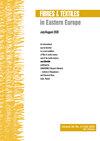用Post Hoc试验分析环锭纺纱的吸湿性
IF 0.9
4区 工程技术
Q3 MATERIALS SCIENCE, TEXTILES
引用次数: 0
摘要
摘要纱线的可卷曲性可达到较高的热生理舒适性。因此,本文旨在对纱线的绞吸性能进行研究,并对影响绞吸性能的因素进行统计分析。方法包括测试由三个级别的纤维类型和两个级别加倍的捻度因素生产的环锭纱的排芯高度。统计工具如方差分析,t检验和事后检验分析了对排汗高度的影响。结果表明,事后检验比方差分析更准确地反映了组间的差异。此外,Bonferroni Alpha与t检验p值的比较显示,纱线的排芯受到纤维类型、加倍和捻度水平的相互作用的显著影响。本文章由计算机程序翻译,如有差异,请以英文原文为准。
Analysis of Ring Spun Yarn Wickability Using the Post-Hoc Test
Abstract Yarn wickability achieves high thermo-physiological comfort. Therefore, this paper aimed to investigate yarn wickability and analyze statistically factors affecting yarn wicking performance. Methodology consists of testing wicking height for ring spun yarn produced from three levels of fibre types and twist factors at two levels of doubling. Statistical tools such as ANOVA, T-test and Post-hoc tests analyzed the impacts on wicking heights. Findings showed that the Post-hoc test represented the variation between groups more accurately than ANOVA. Furthermore, a comparison of Bonferroni Alpha with T-test p-values revealed that yarn wicking was significantly affected by interactions of fibre type, doubling, and twist level.
求助全文
通过发布文献求助,成功后即可免费获取论文全文。
去求助
来源期刊

Fibres & Textiles in Eastern Europe
工程技术-材料科学:纺织
CiteScore
1.60
自引率
11.10%
发文量
12
审稿时长
13.5 months
期刊介绍:
FIBRES & TEXTILES in Eastern Europe is a peer reviewed bimonthly scientific journal devoted to current problems of fibre, textile and fibrous products’ science as well as general economic problems of textile industry worldwide. The content of the journal is available online as free open access.
FIBRES & TEXTILES in Eastern Europe constitutes a forum for the exchange of information and the establishment of mutual contact for cooperation between scientific centres, as well as between science and industry.
 求助内容:
求助内容: 应助结果提醒方式:
应助结果提醒方式:


